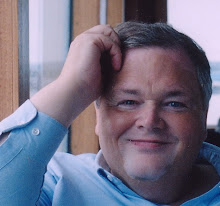Cost Leadership
|
Benefit Leadership
|
|
Adaptive
|
Improvements to current production process
|
Incremental improvements to current product or service to improve
benefits
|
Innovative
|
Disruptive change to a new production process, delivering far lower costs than previous technology.
|
Transforming the nature of the product or service to deliver additional
benefits the customer is ready to pay for.
|
In this mapping the two upper quadrants utilize adaptive creativity, as defined by Michael Kirton. People and organizations of this style seek incremental changes to current methods, while those he characterizes as more to the innovator end of the scale seek ideas that challenge many more of the assumptions about the problem.
Strategy is mapped along original dimensions of Michael Porter, with the left quadrants seeking changes that allow them to offer much lower prices, driving up volume. The rightmost quadrants focus on making changes that differentiate the product or service from others, allowing increase in profits from the increased prices that customers are willing to pay. Although shown as four "quadrants", each dimension has many, many points from extreme to extreme.
Of course there is a lot more to be said about strategy and creativity than these dimensions, but this simplified map separates the innovations and improvements in a way closely related to how we organize to get new opportunities. Many organizations assign the different quadrants to different parts of the organization, or to different specialized programs.
For example a Six Sigma program can be expected to discover many opportunities in the Adaptive Cost Leadership quadrant, but would be exceptional if it discovered a highly innovative product with features that provided new and highly valued customer benefits. On the other hand, a Design Thinking focused effort to develop innovative and transformative new products is unlikely to deliver many ideas to incrementally improve the current production process. The lower left quadrant in which extreme creativity is focused on disruptively better production and delivery processes are very well described by Clayton Christensen in his many works growing out of "Innovators Dilemma". Actions in the top right quadrant attempt to deliver the intended package of benefits and functions in new ways with more benefits per cost, with techniques such as Value Engineering.
Innovation is a critical investment of organizational resources. It should be targeted at areas where the greatest return seems possible, and enough years of benefit to earn back the investment costs of developing and implementing innovative ideas. While all quadrants should be surveyed constantly, strongly focused efforts on the area with the highest apparent potential for each product or service should return the greatest long term success.
Most importantly, the team composition, data analyzed, and creative methods need to be carefully fit to the intentions. Even when the same people, data, and creativity techniques are used in the different areas, the way they are used can be quite different. Managers and consultants organizing and leading product or service focused innovation efforts, need to either understand which kind of innovation they are best prepared to lead, or have the ability to adjust their facilitation to match these differences, as well as organizational, discipline, and cultural backgrounds or innovators and the organizations they serve.
Further reading:
Christensen, Clayton M. , The innovator's dilemma: when new technologies cause great firms to fail, Boston, Massachusetts, USA: Harvard Business School Press, (1997).
Kirton, M. "Adaptors and innovators: a description and measure", Journal of Applied Psychology (61:5) 1976, pp 622–629
Porter, M.E., "Competitive Strategy: Techniques for analyzing industries and competitors" New York: The Free Press (1980).



